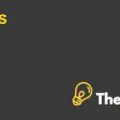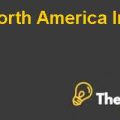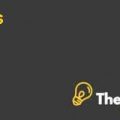
Norton Auto Supply Case Solution
Norton Auto Supply is dividing its inventory due to the increase in the size of stocks in two centers, central distribution centre (CDC) and regional distribution centre (RDC), and the system for planning and controlling technique currently they are using to divide the stocks in category such as:
- High
- Medium
- Low
The CDC distribution channel places the orders for high category stocks only once in a month, “Medium” category stocks are placed once in every two months and “Low” category stocks are ordered once in every six months. For each category ordered parts are placed or delivered in order lead time plus four weeks of average demanded stock. In this way, CDC keeps safety stocks equal to the four weeks of each part demanded.
Regional distribution center (RDC) keeps data of the weekly replacement order in order to replace the previous week sold inventory. In this manner, RDC keeps the safety stock more than twice that of the demand of RDC with the inventory carrying the cost of 26% of the value of the inventory goods.
In current procedures, the fill rate for RDC and CDC stock out was 98% for all parts of the dealer. She tried to avoid the stock out by keeping sufficient stocks in RDC department to fulfill the dealers’ needs as it was not urgent order and they were unable to identify whether the goal is met or not. Later on, as the size of inventory was increasing, she decided to overnight shifts to dealers, which gave 96% of services of stock outs and plus 3% service within 24 hours. The main goal is to cover the dealers need by providing overnight shipment services.
b) To hold the amount of stock at 98% fill rate:
If the fill rate is 98% for both the central distribution center (CDC) and regional distribution center, then total amount would be around $ 6.8 million for CDC and $ 20.6 million for RDC. The total cost amount is changed in both centers due to the fixed cost, which is $ 100 for CDC and $ 300 for RDC.
The total fill rate cost is calculated as the multiplication of weekly demand with 98% holding rate in a warehouse, which leads to holding cost to keep the inventory in the area, purchasing cost which is invested to buy the raw materials, and fixed cost whichis fixed in both cases even ifthere are different fill rates.
Optimize the ordering policy to achieve rates (such as 99% (CDC) & 97.5% (RDC)):
The goal of the company is to construct the ordering policy in order to minimize its average cost. This can be done through proper selection of inventory position and each replenishment order by the supplier.
On the other hand, the changed holding rate (fill rate) of CDC and RDC resulted in the total cost of $ 6.9 million and RDC costs $ 20.8 million. There is a slight change in the cost by changing in rates, therefore it is better that the company should use its current costing policy which would result in more profit as compared to changed fill rates.
For each item how much cost would you save under your proposed policy compared to the current policy:
The results of current policy and proposed policy lead to an increase in the cost of $ 70,100 in CDC if we are using the proposed fill rate and that there would be an increase in the cost of about $ 210,000 in RDC. Therefore, it is better for the company to run its operations at the current fill rate that is 99%..................
This is just a sample partial case solution. Please place the order on the website to order your own originally done case solution.











